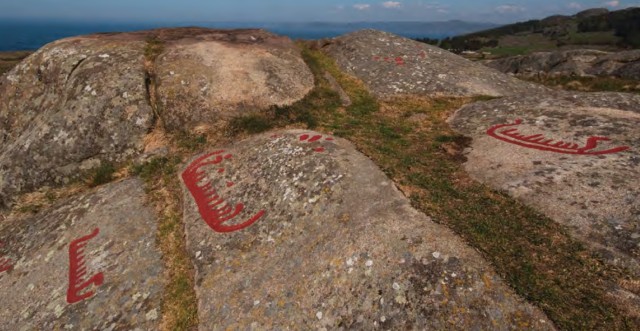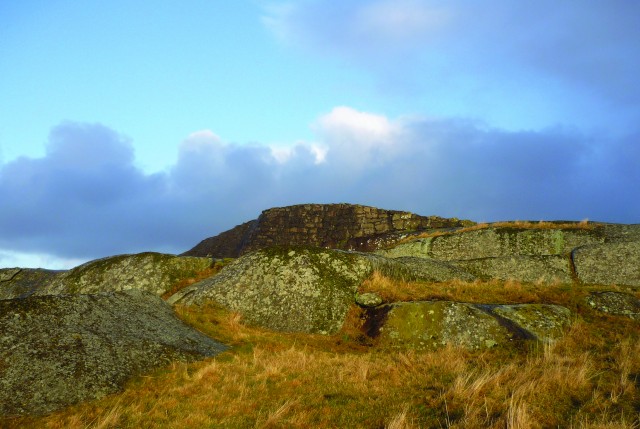Cultural Heritage
Vest-Lista is rich in cultural heritage. The traces of human activity are numerous and date from a variety of epochs. Cultural heritage leaves important footprints in the cultural landscape.
 Jærberget.
Jærberget.
Finds from the Mesolithic tells a tale of early settlement. Here one may find stone-age settlements, dwelling foundations, hollow ways, stone-walls, clearing cairns, burial mounds, coastal cairns, phallic stones and village forts. At Jærberget we find the biggest field of petroglyphs in the south of Norway.
Tracks left by livestock and pastoral fences are the oldest examples of agricultural heritage. They bear witness of the clearing of arable land and of the division of properties through generations. Stone walls, building traditions and settlement patterns hold the stories of the development of farming and of how humans have made a living for themselves in the best possible way.
 The fertility symbol, “Vanen” by the burial field on Sausebakk.
The fertility symbol, “Vanen” by the burial field on Sausebakk.
Vest-Lista is a living and sustainable local community with a non-material cultural heritage. This heritage is kept alive through the telling of stories, the teaching of skills and knowledge and the conservation of old traditions. Together with the visible cultural monuments this helps to enhance our understanding of history.
War memories.
During the occupation 1940-45 the Lista peninsula was considered as a possible entry point for an allied invasion. It was also be possible to establish an airfield here.
 Air defence position on Nordberg Fort.
Air defence position on Nordberg Fort.
The result was a comprehensive development of military installations, and the term “festning” was taken into use. In German this became “Festung Lista”. The term “Festung,” meant that the area should be impregnable for the enemy.
Festung Lista sprawled the landscape, from large coastal forts to bunkers and positions in the beach zone. The remnants of Festung Lista are the cultural monuments of the war.